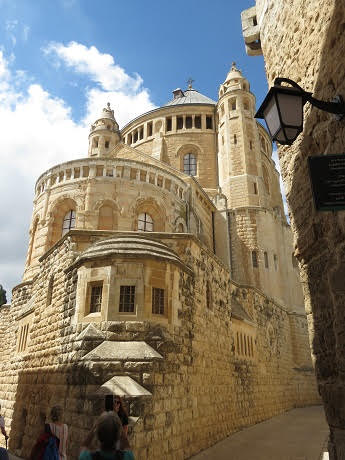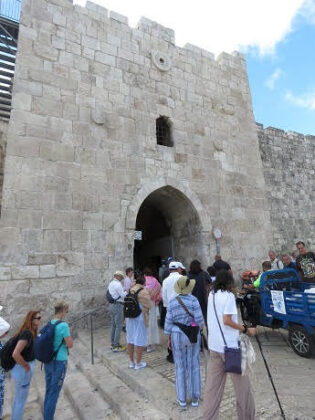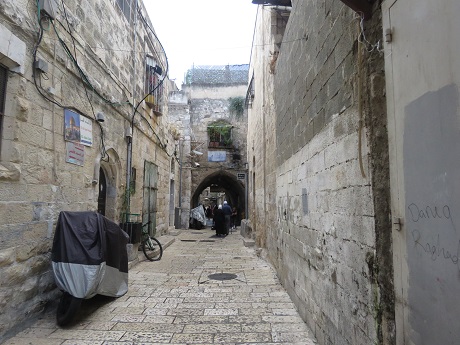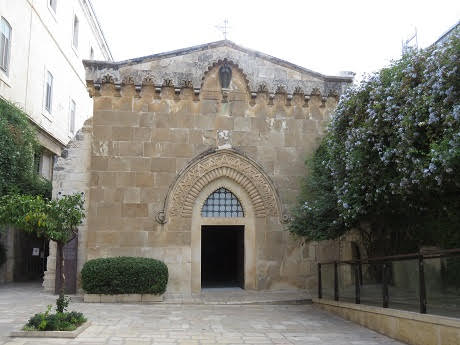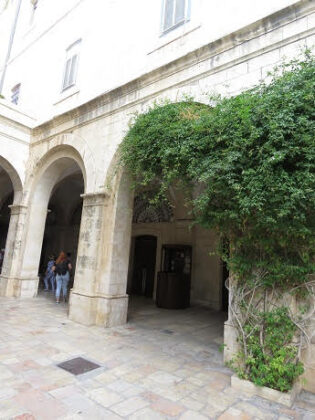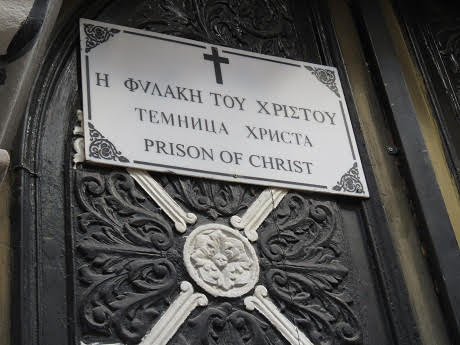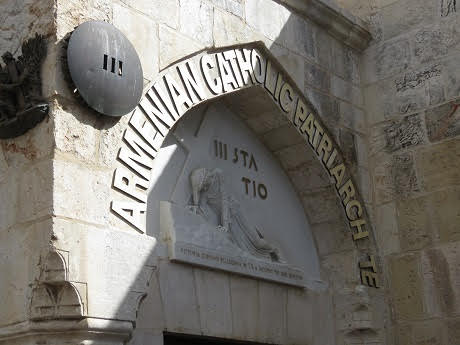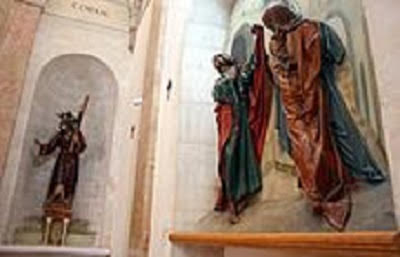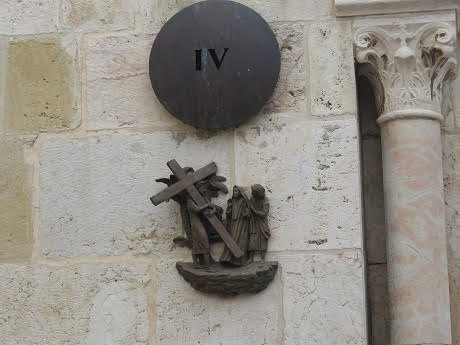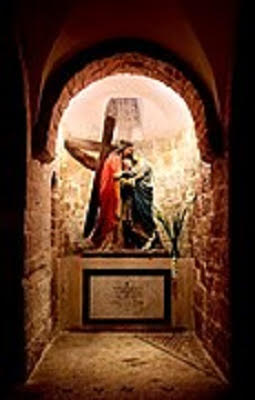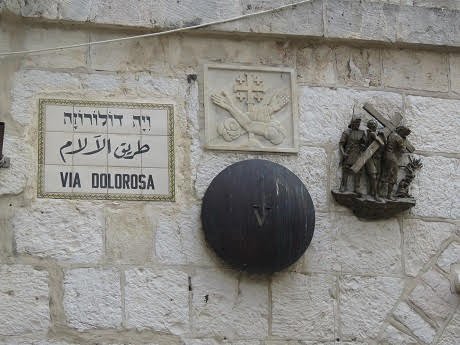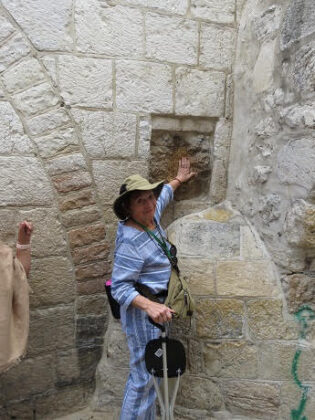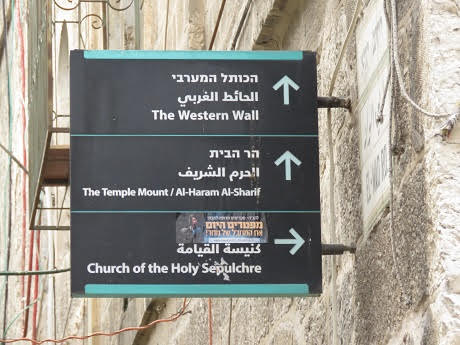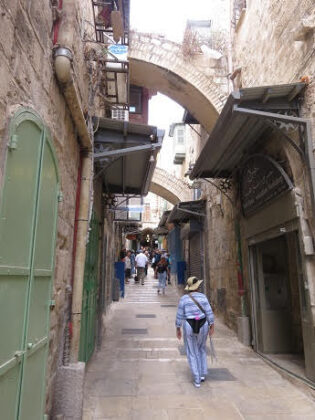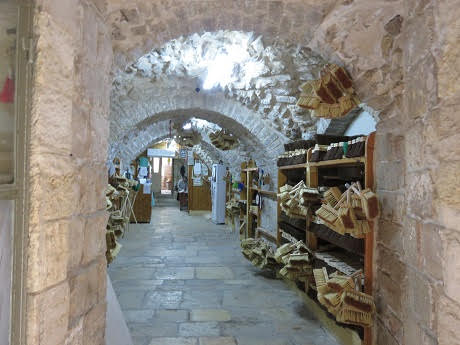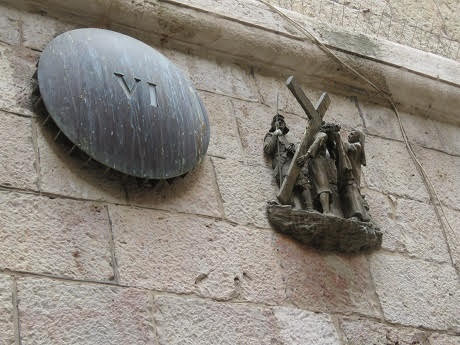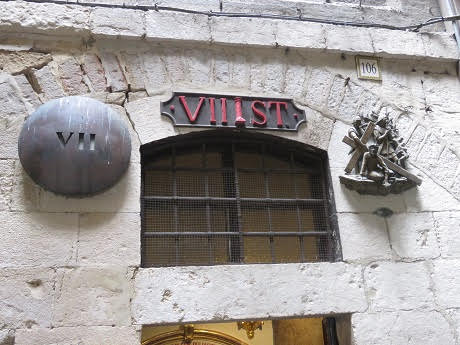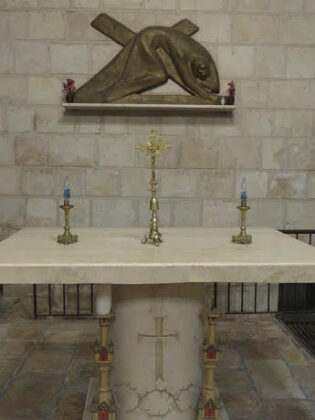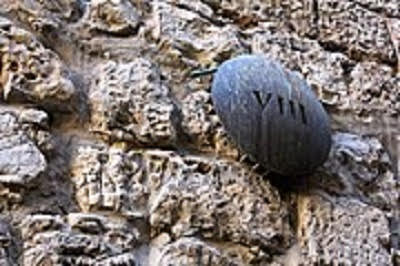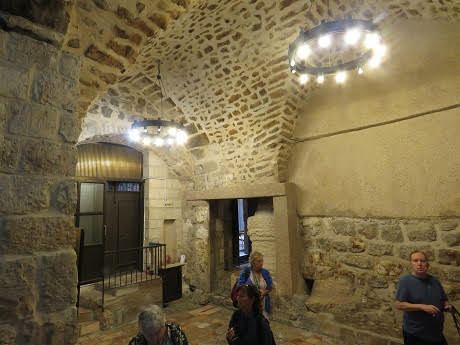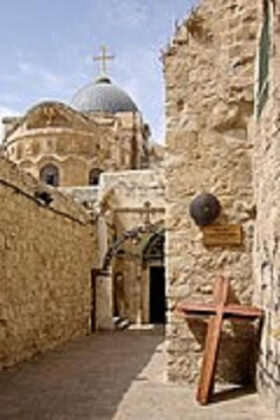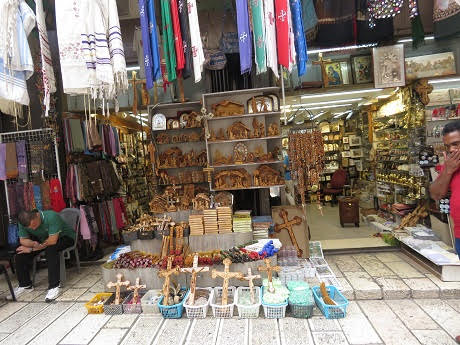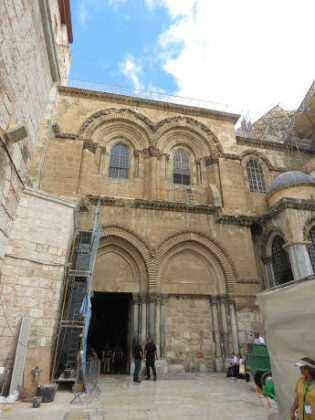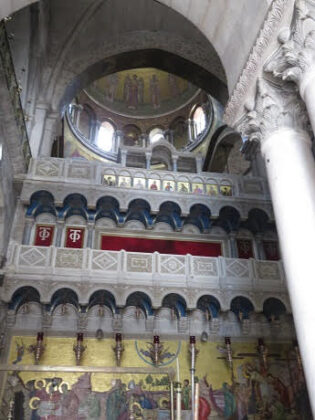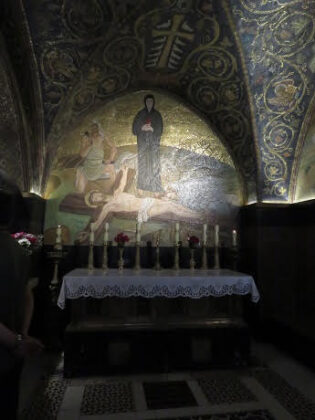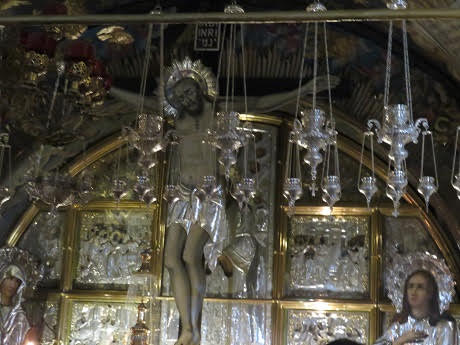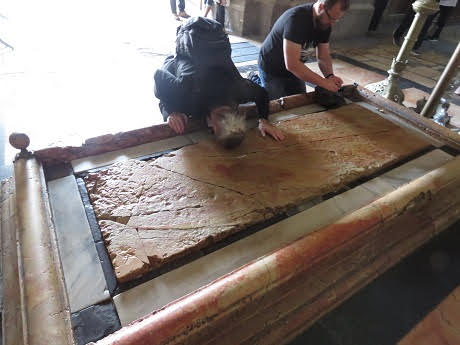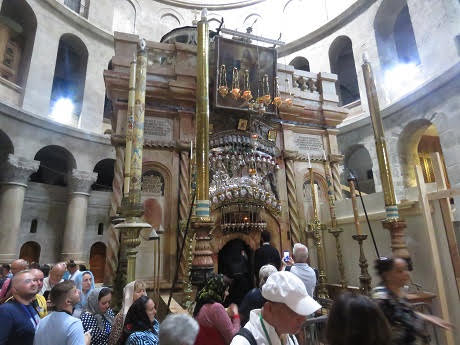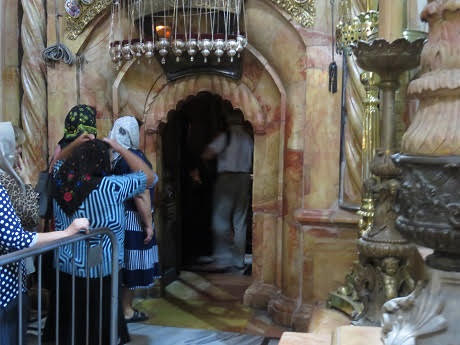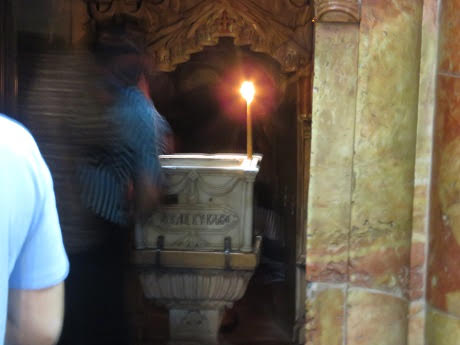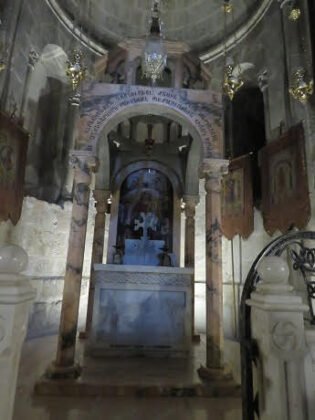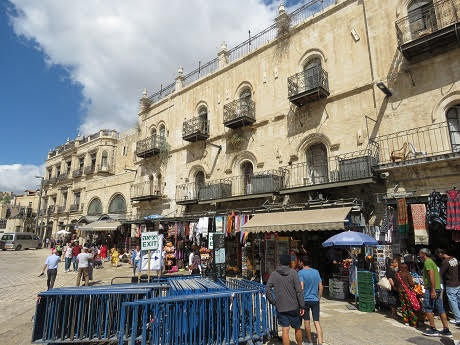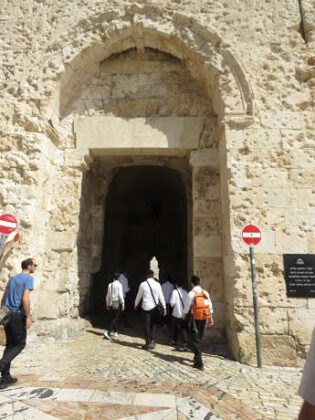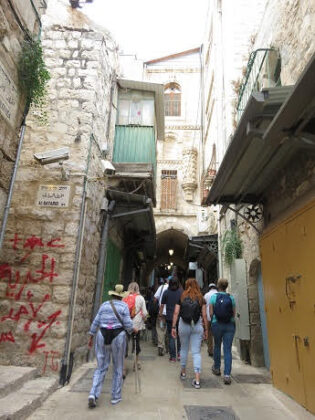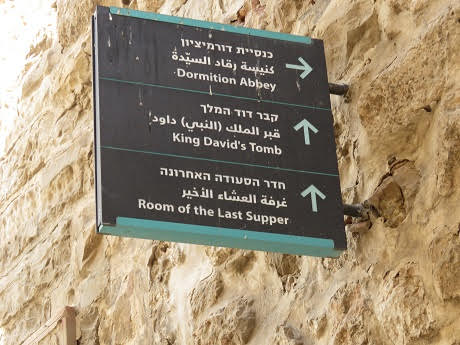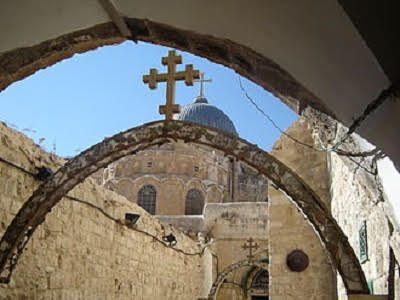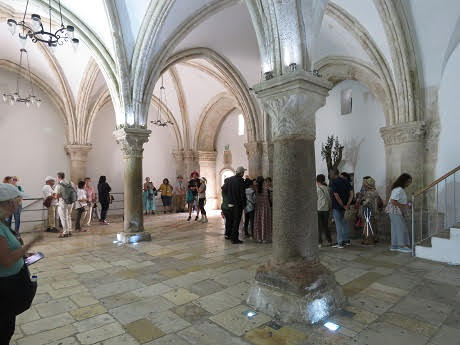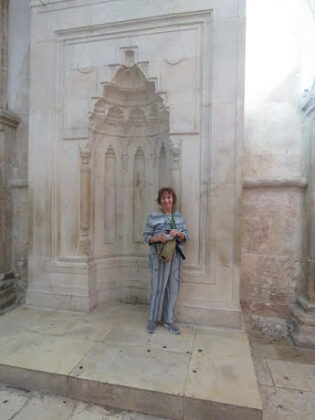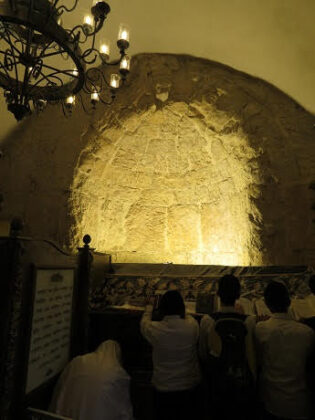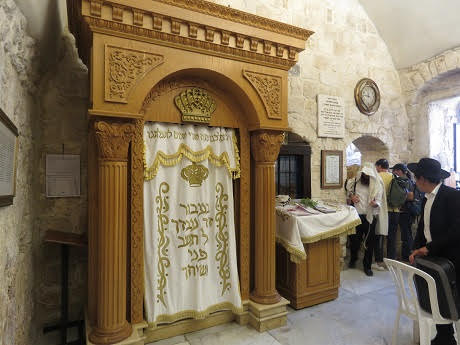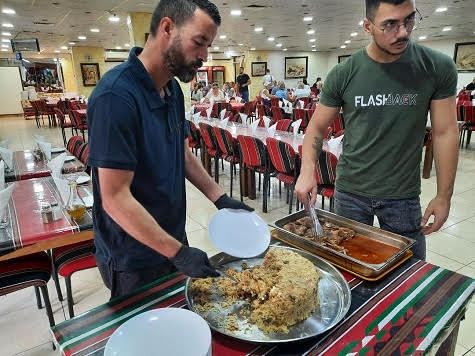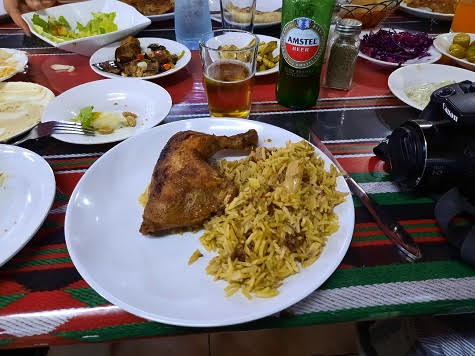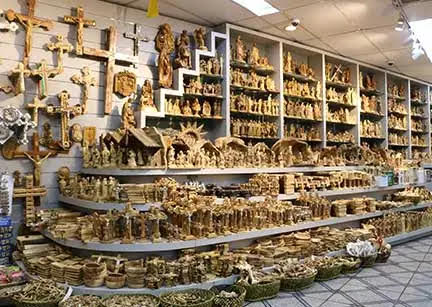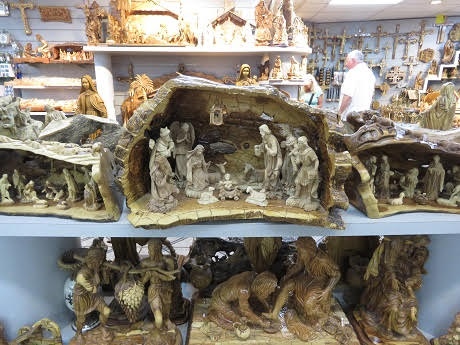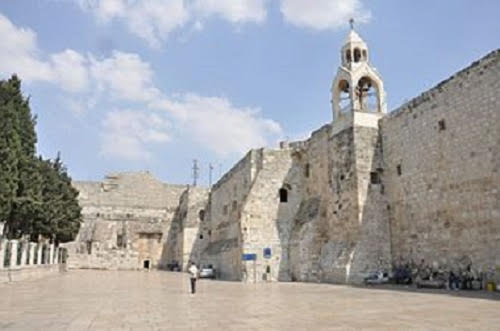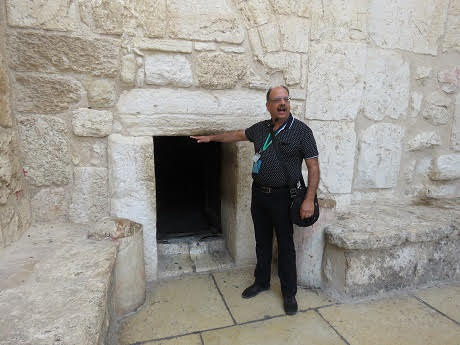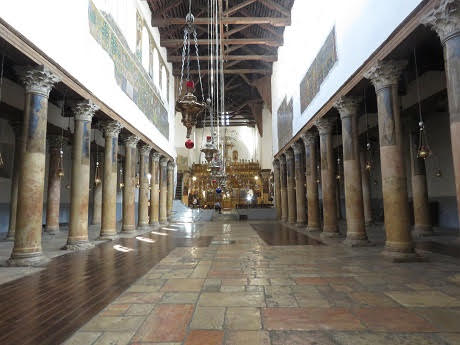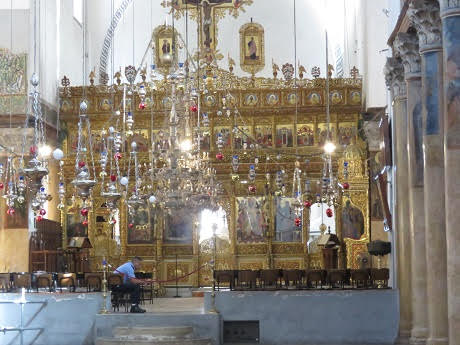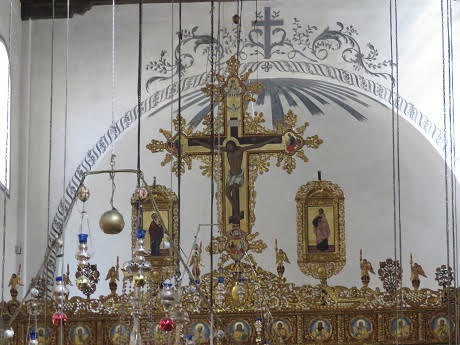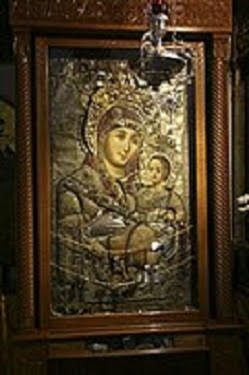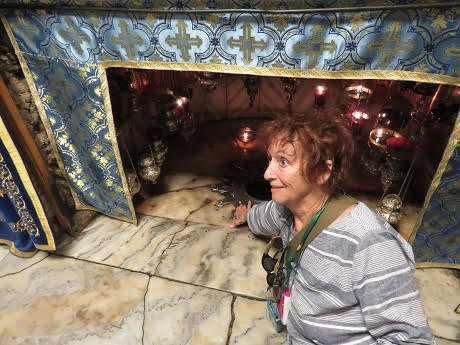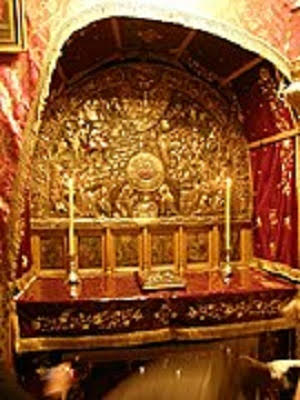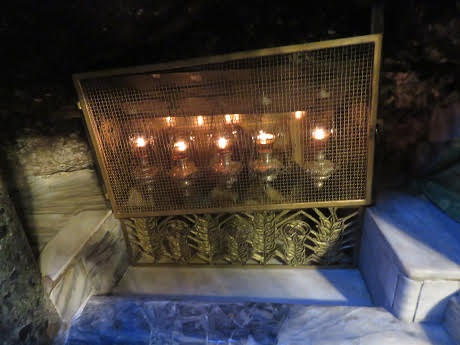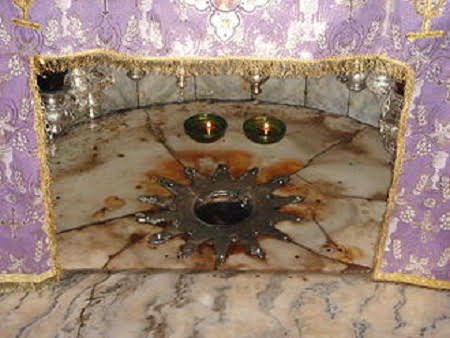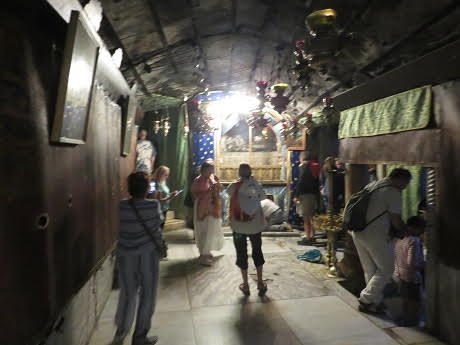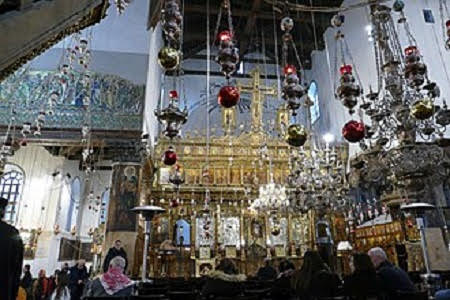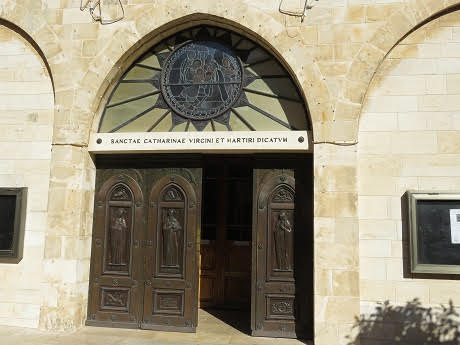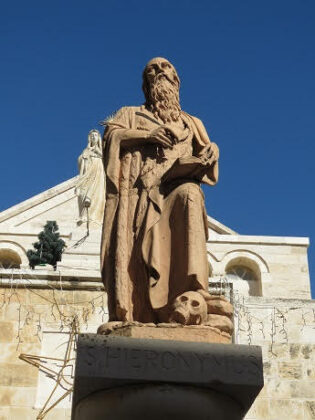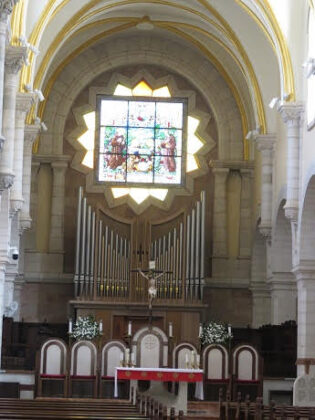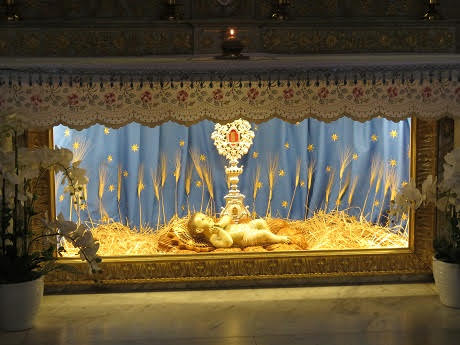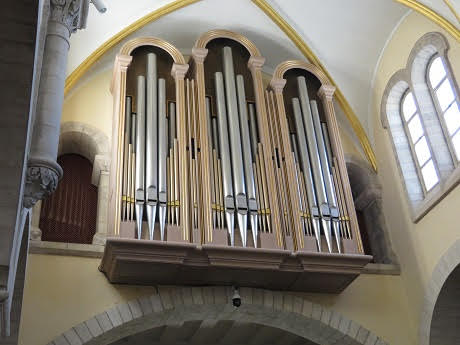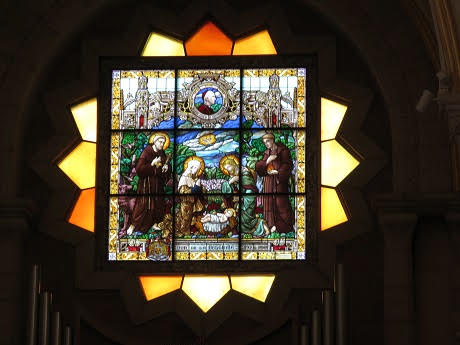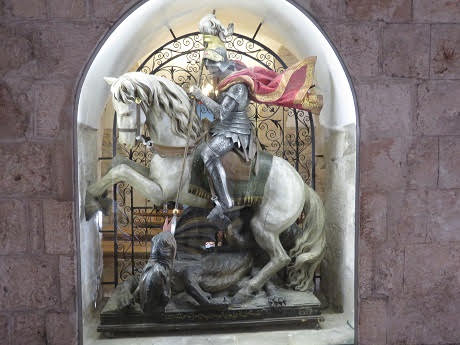By TR Robertson
Our fifth day of the Mid-East Tour would be another day full of trips to incredibly historic holy sites, especially sites important to various religions around the world. Our bus would pick us up from the hotel and dropped us off near another gate entrance to the Old City of Jerusalem, called the Lion’s Gate. We had been given a small booklet called “Maps of the Holy Land” that listed the amazing number of places scattered throughout Israel that had religious significance to religions from this part of the world. As we entered this crowded part of the Old City, we saw it was due to people wanting to walk the Via Dolorosa also called “Way of Sorrows” or the Way of Suffering. This narrow stone pathway is believed to be the last pathway Jesus walked after his condemnation by Pontius Pilate in the Judgement Hall in the Antonia Fortress. It is believed that he bore his cross along this pathway as he moved toward Calvary Hill or Golgotha and has become a Christian pilgrimage.
Along this route we would walk by the “Fourteen Stations of the Cross.” Each station marks an event believed to have occurred, partially based on scripture from the Bible. There are also chapels, convents, and monasteries near each of the stations, as well as markets selling both religious and secular memorabilia. The First Station is in the courtyard of Omariya College, marking the site where the Roman Fortress, where Jesus was held and tried, is thought to have existed. The Second Station is in the Chapels of the Condemnation and Flagellation, chapels of the Franciscans, where Jesus was condemned to death, had the crown of thorns placed on his head and marks the beginning of the Way of the Cross. Another spot marks where Pilate presented Jesus to the crowd. The Third Station of the Cross marks the spot where Jesus first stumbled under the weight of the cross. Each of these stations are numbered and marked with plaques or small sculptured pieces.
The Fourth Station of the Cross is where Mary is said to have seen her son Jesus and is the location of the Church of Our Lady of Sorrows. Station Five marks where a passer-by, Simon of Cyrene, is forced to help Jesus carry the cross. The Chapel of the Convent of the Little Sisters marks the point along the pathway where Veronica wipes the sweat from Jesus’ face and is the Sixth Station of the Cross. The Seventh Station marks the point of his second fall carrying the cross. It is said his death notice was posted here and this area is now called “Judgement Gate.” We did not see several of the stations as they were further down side sections of the pathway and our group was staying on the Via Dolorosa pathway. Station Eight is marked by a Latin Cross on the wall and is said to be the spot Jesus told the women of Jerusalem to not weep for him. The Ninth Station is by a Roman column and is thought to be where Jesus collapsed for the third time as he came in sight of where he would be crucified. The roof of the Church of the Holy Sepulcher Basilica is visible from this point.
The final five Stations of the Cross are within the Basilica. The Tenth Station is where Jesus was stripped of his clothing. Inside the Church of the Holy Sepulcher many of the visitors were very moved by what this church represents, the site of the crucifixion and resurrection of Jesus. This church was built by Emperor Constantine in AD 326. It was destroyed twice by invading groups and rebuilt by the Crusaders between 1114 and 1170. Six different denominations now administer the church. Inside the church a Latin shrine marks the place where Jesus was nailed to the cross, the Eleventh Station of the Cross. A narrow stairway led to the Twelfth Station of the Cross, with a Greek ornamented altar over the Rock of Calvary. The Rock of Calvary is the place where the crosses of Jesus and the two thieves were said to have been erected. In the bedrock beneath this area is a large crack, said to have formed when an earthquake took place when Jesus died. Back down the stairs were the Thirteenth Station, a large Stone of Anointment where Jesus’ body was placed after his death to prepare him for burial. Many people knelt to touch or kiss this stone. The final Station of the Cross, the Fourteenth Station, is considered Christendom’s most sacred place, the site of Jesus’ burial and Resurrection. This area is housed in its own chapel with many people trying to go in the narrow opening. This is the focal point of the Basilica of the Holy Sepulcher. The small chapel was erected by the Crusaders and the site dates to the time of Constantine the Great, AD 300’s. Near this chapel is a Relief of Christ rising from the tomb mounted on the Franciscan chapel. This was a significant moment for many in the group.
Exiting the Church of the Holy Sepulcher, our guide directed us to Mount Zion and the Upper room of King David’s Tomb. This Crusader built hall is believed to be the site of Christ’s Last Supper with his disciples. The room is directly above the Tomb of King David. The large room is an empty space with several arches in the room. Leaving this area, our group once again boarded our tour bus to drive a short distance of 6.5 miles south of Jerusalem, crossing through a check point to the Central West Bank of Palestine, into the city of Bethlehem. Bethlehem has been under the jurisdiction of the Palestinian Authority since 1995. Bethlehem translates to the House of Bread and has a population of 25,000 people. The city was once a majority of Christians but is now 75% Muslim. Bethlehem is said to be the birthplace of David and his coronation as the King of Israel. It is most famous as the birthplace of Jesus. In AD 326, Constantine the Great had a church built on the site, today known as the Church of the Nativity, the oldest house of prayer in Christendom. Israeli law forbids Israeli citizens to visit this area under Palestinian Authority without approval from the Israeli Civil Administration.
Leaving the check point we drove to a restaurant not far away where we would once again have hummus and pita for appetizer and be treated to a dish called maqluba, an upside-down chicken dish with rice, and vegetables. We would have this several times on the trip and Carolyn googled the recipe to try at home. After lunch, our bus drove us a short way down the street to the Lama Brothers Souvenir Shop, in business since 1979, where we were overwhelmed with the amount of olive wood souvenirs available, especially the crosses, manger scenes and jewelry items. We purchased some gift items and several unique Jerusalem crosses for people back home. There were several one-of-a-kind massive manger scenes available costing thousands of dollars.
After our shopping spree, we drove to Manger Square where we were dropped off to walk a short distance to the Church of the Nativity. Manger Square is a large square and forms the hub of the city. In the distance the spire of the Mosque of Omar, built in 1860, could be seen and running along the square was the Swedish Peace Center. Across from this was a courtyard leading to a small door we entered, called the Door of Humility, leading into the Church of the Nativity. The Church is a World Heritage Site since 2012 and since 2008 has been on the list of Most Endangered Sites. The Christian Basilica is the oldest original church in the Holy Land. The grotto it houses is a natural cave and is the oldest site used as a place of worship in Christianity. Greek Orthodox Patriarchates of Jerusalem maintain the Basilica and Roman Catholics are responsible for maintaining the manger area.
The grotto is located under the main alter. A short staircase leads into the grotto. Above the staircase was a painting of the Virgin Mary with the baby Jesus. We were fortunate to arrive before the lines ran down the length of the long church, as when we left people we saw would be waiting for well over an hour or more to enter the grotto. After a short wait, we descended into the small area said to be both the place of Christ’s birth and the area next to it where a manger area would have been. Both sites are small cave areas. The Alter of Nativity was marked by a 14-pointed silver star with a Latin inscription that said, “Here Jesus Christ was born to the Virgin Mary.” Many knelt to touch the star. The star was first installed in 1717, stolen then replaced in 1853. The Alter of the Magi is located opposite the manger site. Numerous religious icons hung both in the church and around the grotto. Exiting the grotto, up stairs on the other side, we met with our guide to visit the adjoining Church of St. Catherine, a Roman Catholic Church built in 1882 by Franciscans. In this church was an underground monastery we visited dedicated to St. Jerome. It is said that St. Jerome was responsible for translating the books of the Bible from Hebrew into Latin. He worked from AD 390 until AD 405 on this accomplishment. The two rooms we visited under St. Catherine’s were said to be where he worked for 15 years on this task. One quote attributed to St. Jerome is “’Good, better, best. Never let it rest. ‘Til your good is better and your better is best.”
We boarded the bus again, drove back to Jerusalem to the hotel with the evening to ourselves. Everyone was anticipating tomorrow as we would be visiting the Dead Sea, the lowest point on Earth, and the large ruin site of Masada overlooking the Dead Sea. Part 4 will cover this part of the trip.


